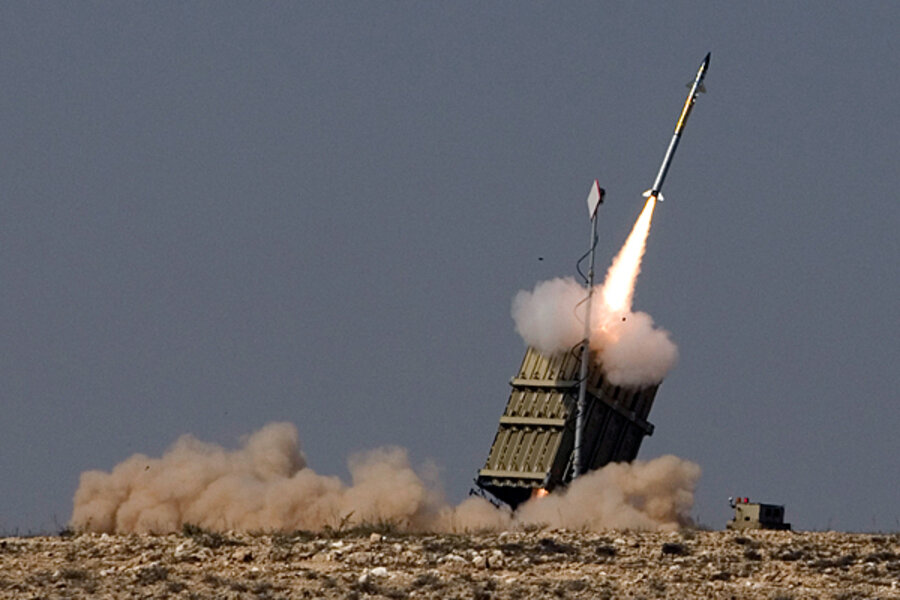Israel's Iron Dome system reassures nation on Gaza
Loading...
| Ashkelon, Israel
A cease-fire between Israel and Hamas took hold on Monday, ending four days of rocket attacks and air strikes across the Gaza border that brought the sides to the brink of a major military conflict for the second time in five months.
A key factor supporting the cease-fire was a new weapons system that allows Israel to protect its citizens and thereby lessen public pressure for swift retaliatory strikes on Gaza.
Though not fool-proof, the "Iron Dome" missile-defense system shot down about 20 militant rockets in recent days before they landed in Israel cities. That provided a window for mediators from Egypt and the United Nations to step in and calm the situation.
Israeli officials had high praise for the system, which was rushed into development following Israel’s 2006 war in Lebanon with Hezbollah, when short-range rockets paralyzed Israel despite its aggressive attack capabilities.
"First of all it provides the people better security," said Yosef Kuperwasser, director general of Israel’s Strategic Affairs Ministry. "It provides us with a wider room to maneuver if our citizens are protected.
"If needed we can have a longer period of escalation and we can sustain it for a longer period of time before doing what is necessary," he added, referring to a major escalation.
93 percent success rate
For the Israeli army, Iron Dome is just one element in a system of pricey anti-missile hardware developed to answer developing threats from just miles a way in Lebanon and Gaza, and as far afield as Iran.
Though the military is still perfecting the system, two batteries were used in a previous round of fighting in April to protect the southern Israel cities of Ashkelon and Beersheva. Use of the interceptor was expanded in the recent standoff, with the system achieving a success rate of 93 percent.
"I can never promise 100 percent success," said Col. Zvika Haimovitch, an air force commander standing in an open field next to a launcher deployed at the southern end of Ashkelon. "Citizens will still need to go to the bomb shelters."
Israel only has two of the systems and has said it needs around 15 batteries for optimal protection around Gaza and the Lebanon border. Defense Minister Ehud Barak said Israel would have two more batteries by the end of this year, and nine by the end of 2013.
US helps fund new batteries
The US Congress has budgeted $203.4 million in 2011 to help pay for more batteries, which cost $21 million each. The system can tell the operators to make decisions within seconds whether short-range missiles are on trajectory to hit a strategic or populated target.
Experts say the technology of Israel’s anti-missile interceptors – which also includes the Arrow II missile for Iranian ballistic rockets – is based on the same concepts as the US-conceived Star Wars missile defense program.
Residents of southern Israel say the system has boosted morale. Nelly Hassan, the owner of a lotto ticketing booth in Ashkelon’s shopping mall, said the deployment of Iron Dome has eased anxieties about being completely exposed to attacks.
But it hasn't wiped out fear all together. "People aren’t coming to the mall," says Ms. Hassan. "It’s a blow to business."
[ Video is no longer available. ]





